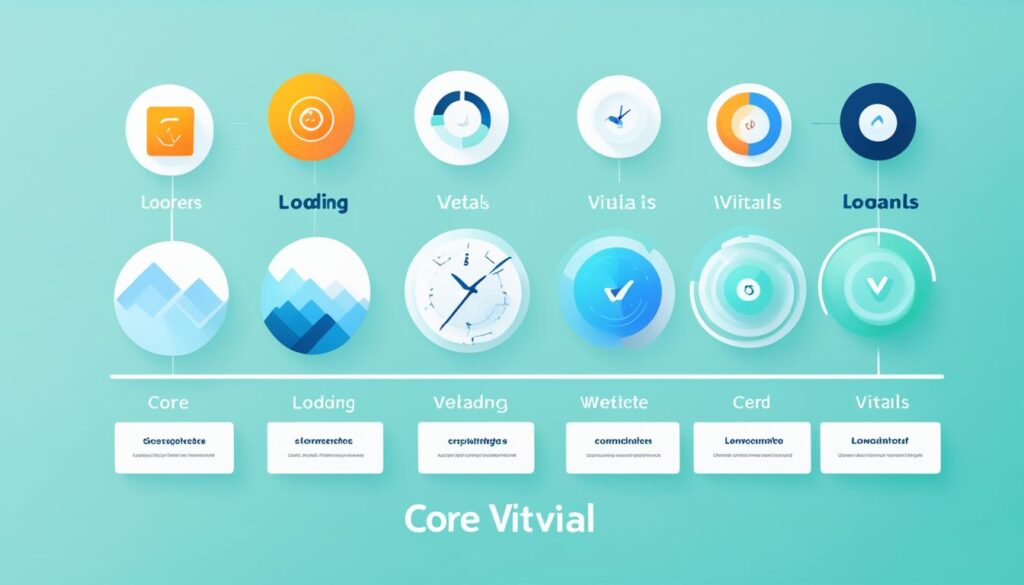“As an Amazon Associate I earn from qualifying purchases.” .
Website optimization is like preparing a delicious dish. You carefully select the ingredients, follow the recipe, and indulge in the final product. But what if you forgot to turn on the oven or accidentally used salt instead of sugar? Your dish would be a disaster, leaving you disappointed and hungry.
Similarly, a poorly optimized website can leave your visitors frustrated and hungry for a better user experience. To avoid this, you need to master the art of website optimization techniques, the secret recipe for online success.
Let me take you on a mouthwatering journey through the top website optimization techniques that will transform your online presence from a bland soup into a delectable feast.
Key Takeaways:
- Website optimization is like cooking a delicious dish – it requires the right ingredients and techniques.
- Mastering website optimization techniques is crucial for online success.
- Stay tuned to discover the secret recipe for optimizing your website and delighting your visitors.
- Learn how to improve website speed, engage your audience, and climb search engine rankings.
- Unlock the power of website optimization techniques and savor the rewards they bring.
Understanding Search Intent
Search intent is a crucial aspect of website optimization. In today’s digital landscape, search engines like Google are constantly evolving to understand the context of users’ search queries and deliver the most relevant results. To ensure your website ranks high in search engine results pages (SERPs), it is essential to conduct advanced-level keyword research and align your content with user intent.
When it comes to search intent, understanding what users are looking for goes beyond simply targeting specific keywords. It involves delving into the underlying user intent and crafting content that satisfies their needs. By addressing their specific pain points or providing valuable information, you can establish yourself as an authority in your niche and attract organic traffic.
One effective way to understand user intent is by analyzing the top-ranking websites for your target keywords. Look at the type of content they offer, the format they use (such as blog posts, videos, or infographics), and the questions they answer. This analysis will provide valuable insights into what users expect when they perform a specific search.
Furthermore, keeping track of the evolving search intent trends is crucial for staying ahead of the game. As user behavior and expectations change, search intent also evolves. By regularly monitoring industry trends, utilizing tools like Google Trends, and leveraging user feedback, you can ensure your content remains relevant and aligned with what users are looking for.
Understanding search intent is crucial for effective website optimization
Remember, search intent isn’t a one-size-fits-all concept. Different search queries can have different intents, such as informational, navigational, transactional, or commercial. By understanding the intent behind each search query, you can tailor your content to fulfill users’ needs and improve your chances of ranking higher in SERPs.
Conducting In-Depth Keyword Research
To align your content with search intent, it is important to conduct thorough keyword research. This involves identifying relevant keywords that not only have significant search volume but also align with the intent of your target audience.
Begin by brainstorming a list of seed keywords that are relevant to your industry, products, or services. Then, use keyword research tools such as Google Keyword Planner, SEMrush, or Moz Keyword Explorer to expand your list and discover additional keywords that users are searching for. Look for keywords that have high search volume, low competition, and a clear connection to your target audience’s needs.
Once you have your list of keywords, analyze the search results for each keyword to understand the intent behind them. Are the top-ranking pages providing informational content, transactional opportunities, or navigational guidance? This analysis will help you craft content that aligns with the specific intent behind each keyword.
Optimizing Your Content for User Intent
Having identified the intent behind different search queries and conducted comprehensive keyword research, it’s time to optimize your content accordingly. Here are a few key strategies to consider:
- Create high-quality and comprehensive content that directly addresses the intent of your target audience. This could include detailed guides, how-to articles, or product reviews.
- Organize your content in a way that is easy for users to navigate and find the information they are looking for. Use clear headings, bullet points, and subheadings to break down complex topics.
- Optimize your meta tags, including the title tag and meta description, with keywords that reflect users’ intent. These tags play a crucial role in attracting users to click on your search result.
- Include relevant multimedia elements, such as images, videos, or infographics, to enhance the user experience and provide valuable information.
- Regularly update and refresh your content to ensure it remains relevant and aligned with evolving user intent and industry trends.
By understanding search intent, conducting thorough keyword research, and optimizing your content accordingly, you can position your website as a valuable resource that meets the needs of your target audience. This will not only improve your search engine rankings but also increase engagement and conversions on your website.
| Benefits of Understanding Search Intent | Why Keyword Research Is Crucial | Optimizing Content for User Intent |
|---|---|---|
| Rank higher in search engine results | Identify keywords with high search volume and low competition | Create comprehensive and valuable content |
| Increase organic traffic to your website | Understand the intent behind each keyword | Organize content for easy navigation |
| Establish your brand as an industry authority | Analyze search results to refine your keyword list | Optimize meta tags with relevant keywords |
The Importance of Technical SEO
When it comes to website optimization, technical SEO is the bedrock that sets the stage for success. It’s like building a solid foundation for a skyscraper – without it, your website is at risk of crumbling in the competitive digital landscape.
So, what exactly is technical SEO? It’s the strategic process of optimizing your website’s architecture and infrastructure to ensure search engines can crawl, index, and understand your content effectively. By implementing technical SEO best practices, you pave the way for improved search engine rankings, better user experience, and increased organic traffic.
One crucial aspect of technical SEO is designing a user-friendly website architecture. Think of it as creating a blueprint that guides visitors through your site effortlessly. By organizing your pages logically and categorizing your content, you make it easier for search engines and users to navigate and find what they’re looking for.
Technical SEO also involves performing regular SEO audits to identify and fix any underlying issues that may hinder your website’s performance. One powerful tool for conducting an SEO audit is Google Search Console. It allows you to investigate potential problems like status code errors, robot.txt errors, indexing issues, duplicate title tags, broken links, and even submit XML sitemaps.
Now, before you get overwhelmed, remember that technical SEO doesn’t require coding wizardry. It’s about understanding the fundamental elements that affect your website’s visibility and making the necessary adjustments. By focusing on these technical aspects, you enhance your website’s performance, improve user experience, and signal to search engines that your site is worthy of higher rankings.
Benefits of Technical SEO:
“Investing in technical SEO is like giving your website a VIP pass to search engine success. It sets the stage for improved visibility, increased organic traffic, and a seamless user experience. In a nutshell, it’s the secret sauce that separates extraordinary websites from mere online placeholders.”
Ready to harness the power of technical SEO and take your website to new heights? Let’s dive into the key strategies and techniques that will transform your online presence.
| Technical SEO Best Practices | Benefits |
|---|---|
| Optimize website speed | Improved user experience and search rankings |
| Ensure mobile responsiveness | Expanded reach and enhanced mobile user experience |
| Fix crawl errors and broken links | Enhanced crawlability and search engine visibility |
| Create XML sitemaps | Improved indexing and discoverability of your content |
| Optimize meta tags and header elements | Enhanced click-through rates and search engine visibility |
| Implement structured data (schema markup) | Rich snippets and improved search experience |
| Secure your website with HTTPS | Boosted trust and security for users and search engines |
Embrace the power of technical SEO, and you’ll be well on your way to conquering the search engine rankings and delivering an exceptional user experience. Stay tuned for the next section, where we explore the art of enhancing user experience and the critical role it plays in website optimization.
Enhancing User Experience
User experience (UX) is a critical factor in website optimization. To create a seamless user experience, you need to understand your target audience’s needs, preferences, and limitations. Factors like usefulness, usability, desirability, findability, accessibility, credibility, and value all contribute to a positive user experience.
One way to measure and improve the user experience on your website is by conducting multivariate and A/B testing. This allows you to gather data and insights on user behavior, preferences, and interactions. By analyzing the results, you can make informed decisions and implement changes that enhance the overall UX.
Additionally, mobile optimization is crucial in today’s digital landscape. With mobile traffic on the rise, it’s essential to ensure your website offers a seamless experience across various devices and screen sizes. A responsive design, fast loading times, and intuitive navigation are key elements for optimizing your website for mobile users.
Remember, a positive user experience not only improves engagement and conversions but also influences search engine rankings. Search engines like Google prioritize websites that provide exceptional user experiences, as it aligns with their goal of delivering the most relevant and valuable content to users.
“The key to a successful website is to prioritize user experience. By understanding your audience and optimizing your website for their needs, you can create a seamless and engaging user journey.” – Jane Smith, UX Designer
Benefits of Enhancing User Experience
When you prioritize user experience, you can expect several benefits:
- Increased engagement and time spent on your website
- Higher conversion rates and sales
- Positive word-of-mouth and referrals
- Improved brand loyalty and trust
- Better search engine rankings
Key Components of a Positive User Experience
To create a positive user experience, consider the following components:
- Usability: Ensure your website is easy to navigate, and information is accessible.
- Design: Create an aesthetically pleasing and visually engaging website.
- Functionality: Make sure all interactive elements and features work smoothly.
- Clear communication: Provide concise and relevant information to users.
- Site speed: Optimize your website for fast loading times to reduce bounce rates.
- Mobile optimization: Ensure your website is mobile-friendly and responsive.
Optimizing for Core Web Vitals
When it comes to website performance, the user experience is paramount. That’s why Google introduced Core Web Vitals, a set of metrics designed to measure and improve the loading experience, interactivity, and visual stability of web pages. These core web vitals, including Largest Contentful Paint (LCP), First Input Delay (FID), and Cumulative Layout Shift (CLS), have become integral to Google’s core algorithm and directly impact search engine rankings.
So, how can you optimize your website for core web vitals and improve the overall page experience? It starts with monitoring and measuring your website’s performance using tools like PageSpeed Insights, Lighthouse, and Search Console. These tools provide valuable insights into areas of improvement, allowing you to identify and address any issues that may hinder your website’s performance.
One of the key metrics to focus on is Largest Contentful Paint (LCP), which measures the loading speed of the largest element on your web page. To improve this metric, you can optimize your images, minimize CSS and JavaScript files, and leverage browser caching techniques. By reducing the load time of your largest content, you can enhance the overall user experience and positively impact your core web vitals.
Another important metric is the First Input Delay (FID), which measures the responsiveness of your website to user interactions. To reduce the FID, you need to optimize your JavaScript code, defer non-critical JavaScript files, and eliminate any render-blocking resources. By ensuring that your website is quick to respond to user input, you can provide a seamless and interactive browsing experience.
Lastly, Cumulative Layout Shift (CLS) measures the visual stability of your web page by assessing any unexpected layout shifts during the loading process. To minimize layout shifts, you should specify sizes for your images, avoid dynamically injected content above existing elements, and make use of CSS properties like aspect-ratio. By maintaining visual stability, you can prevent frustrating user experiences caused by sudden shifts in content.
Key Takeaways:
- Core Web Vitals are essential for optimizing the page experience and improving website performance.
- Metrics like LCP, FID, and CLS directly impact search engine rankings.
- Tools like PageSpeed Insights, Lighthouse, and Search Console help measure and optimize core web vitals.
- Optimizing image loading, reducing JavaScript execution time, and enhancing visual stability are key strategies.

By actively optimizing for core web vitals, you can ensure that your website delivers a seamless and engaging user experience. Not only will this lead to higher search engine rankings, but it will also result in increased user satisfaction and improved overall website performance.
Leveraging Schema Markup
Enhance the search experience and provide context to your web pages by leveraging schema markup. With schema markup, you can create rich snippets that appear in search results, giving users more information and boosting your website’s visibility in search engines. This powerful tool allows you to provide additional details about articles, books, events, FAQ pages, how-to guides, local businesses, products, recipes, reviews, and videos.
Implementing schema markup is relatively simple, especially if you use plugins available for platforms like WordPress. By adding relevant schema markup to your website, you can improve the search experience for your audience, make your content stand out in search results, and increase organic click-through rates.
Benefits of Schema Markup
Using schema markup offers several benefits for your website and search experience. Here are a few advantages:
- Improved Visibility: Schema markup helps your website stand out in search results with rich snippets, giving users more information about your content.
- Enhanced Click-Through Rates: With additional details displayed in search results, schema markup can entice users to click on your website, increasing organic click-through rates.
- Clearer Context: Schema markup provides search engines with a better understanding of your content, improving relevancy and accuracy in search results.
- Rich Results: By implementing schema markup, you can display various rich results, such as star ratings, event details, recipe preparation times, and more, making your content more engaging.
Implementing Schema Markup
Implementing schema markup on your website can be done by following these simple steps:
- Identify Relevant Schema Types: Determine the most suitable schema types for your content, such as Article, Product, Recipe, or LocalBusiness.
- Add Schema Markup Code: Insert the appropriate schema markup code to the relevant sections of your web pages. You can refer to the schema.org website for the correct schema markup code.
- Verify Schema Markup: Use Google’s Structured Data Testing Tool or other validation tools to ensure that your schema markup is implemented correctly and without errors.
- Monitor Results: Regularly monitor the performance and visibility of your schema markup by analyzing search engine snippets and tracking organic click-through rates.
By leveraging schema markup, you can provide valuable information to search engines and enhance the search experience for your users. Incorporate schema markup into your website optimization strategy to improve search visibility, attract more organic traffic, and stand out from the competition.
Harnessing the Power of Content Marketing
Content marketing is the key to unlocking the full potential of your website’s optimization. In a world where information overload is the norm, standing out from the crowd and capturing your audience’s attention can be challenging. However, by leveraging the power of valuable content, you can create a compelling content hub that not only attracts visitors but also keeps them engaged and coming back for more.
Creating valuable content is all about providing your audience with information, insights, and solutions that they find useful and relevant to their needs. By understanding your target audience’s pain points, interests, and desires, you can craft content that resonates with them on a deep level. Whether it’s educational blog posts, informative videos, or engaging podcasts, valuable content has the power to establish your brand as a trusted authority in your industry.
But valuable content alone is not enough. To maximize its impact, you need to promote it effectively through various channels. Social media platforms like Facebook, Twitter, and LinkedIn can help you reach a wider audience and drive more traffic to your website. Email marketing campaigns allow you to nurture relationships with your subscribers and keep them informed about your latest content offerings. Partnering with influencers and industry experts can also expand your reach and introduce your valuable content to new audiences.
One often overlooked aspect of content marketing is the importance of updating stale content. Over time, even the most valuable content can become outdated or lose its effectiveness. By regularly reviewing and refreshing your existing content, you can breathe new life into it and boost its search engine optimization. Updating stale content not only improves its relevance but also sends positive signals to search engines, indicating that your website is actively maintained and providing valuable information.
Remember, content marketing is not a one-time effort, but an ongoing strategy. It requires consistent effort, creativity, and adaptability to succeed in today’s competitive landscape. By harnessing the power of content marketing, you can drive more traffic to your website, increase brand awareness, and build strong relationships with your target audience.
The Benefits of Content Marketing:
- Drives more traffic to your website
- Increases brand awareness
- Establishes your brand as a trusted authority
- Builds strong relationships with your audience
- Improves search engine optimization
- Generates leads and conversions
Updating Stale Content Table:
| Old Content | New and Improved Content |
|---|---|
| Outdated statistics | Fresh data and insights |
| Obsolete strategies | Updated and effective tactics |
| Inaccurate information | Verified and reliable facts |
| Low engagement | Engaging visuals and interactive elements |
As shown in the table above, updating stale content can breathe new life into your website, enhancing its relevance and engagement. By investing time and effort into refreshing your existing content, you can optimize your website’s overall SEO and provide your audience with valuable and up-to-date information.

Conclusion
Website optimization is a continuous journey that requires vigilance and ongoing analysis. Tracking key performance indicators (KPIs) is crucial to measuring the success of your efforts. By monitoring metrics such as customer lifetime value, content efficiency, average engagement time, conversion goals, search visibility, brand visibility, new and returning users, average time on site, and revenue per thousand, you can gain valuable insights into the effectiveness of your website optimization techniques.
But it doesn’t stop there. Testing and analyzing different strategies is essential for ensuring your website is performing at its best. By conducting A/B tests and documenting changes, you can uncover valuable insights about your audience’s preferences and behavior, refining your approach accordingly. This iterative process allows you to optimize your website effectively, delivering a positive user experience that keeps visitors engaged and coming back for more.
So, as you navigate the ever-evolving landscape of website optimization, remember to stay focused on your goals and keep a close eye on your KPIs. Continuously testing, analyzing, and fine-tuning your strategies will lead to long-term success, helping you stay ahead in the competitive online space. Embrace the power of data and let it guide your decisions, and you’ll be well on your way to reaching new heights of website performance and user satisfaction.
FAQ
What are the top website optimization techniques for success?
How does understanding search intent contribute to website optimization?
Why is technical SEO important for website optimization?
How does user experience impact website optimization?
What are core web vitals and why are they important for website optimization?
How does schema markup contribute to website optimization?
How does content marketing play a role in website optimization?
Why is tracking and analyzing key performance indicators important for website optimization?
“As an Amazon Associate I earn from qualifying purchases.” .



